In the evolving discourse around sustainable design, few materials are as universally dismissed—and as underexplored—as dust. Whether sourced from industrial processes, domestic cleaning, or extraterrestrial environments, dust is typically considered a byproduct with no intrinsic value. But a new generation of designers and scientists is shifting this perception, developing innovative applications that turn fine particulate waste into valuable material assets.
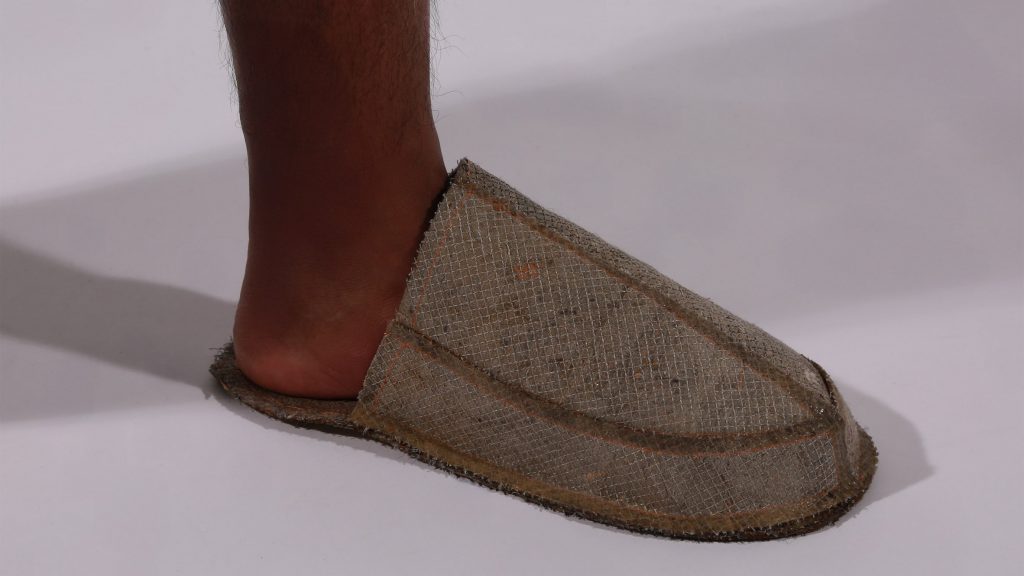
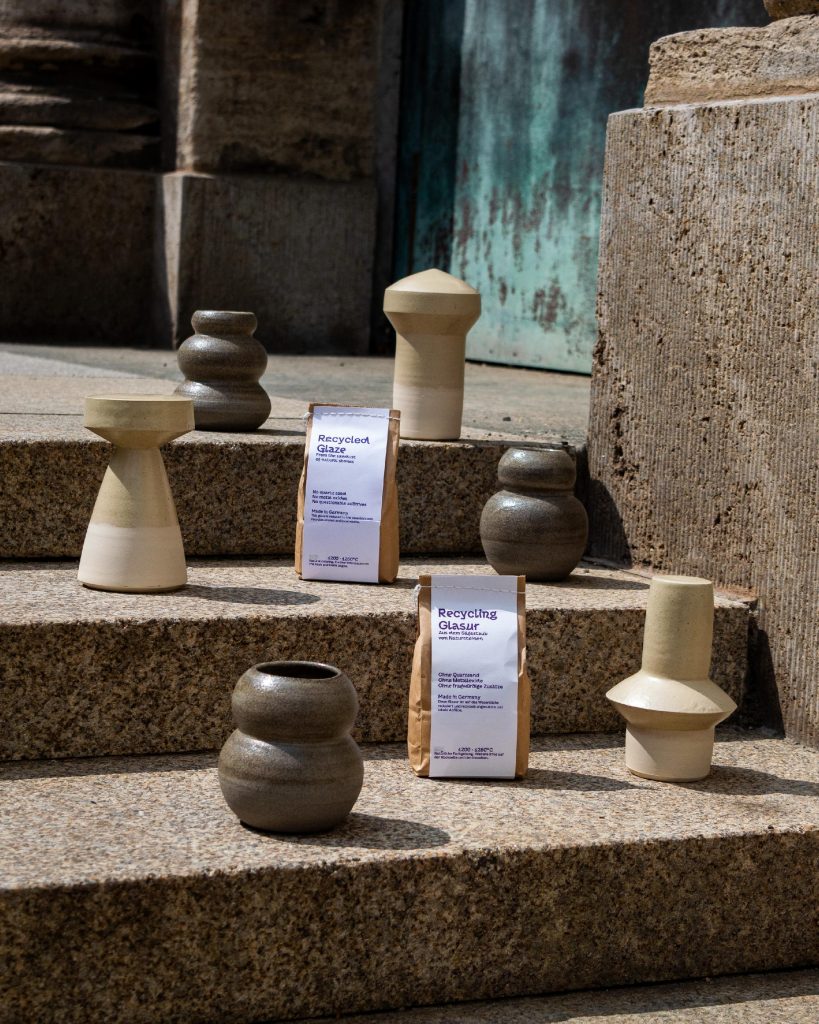
Recycled Glaze by Studio Peipei
In Munich, material-focused design studio Studio Peipei has developed a fully recycled ceramic glaze made from industrial stone sawdust. The process addresses the significant resource demands of the ceramics industry by repurposing up to 40 tons of stone dust per month from nearby production facilities. Adaptable to a wide range of stone types, the glaze produces unique textures and hues with each batch, responding to variables such as mineral composition, firing temperature, and clay body.

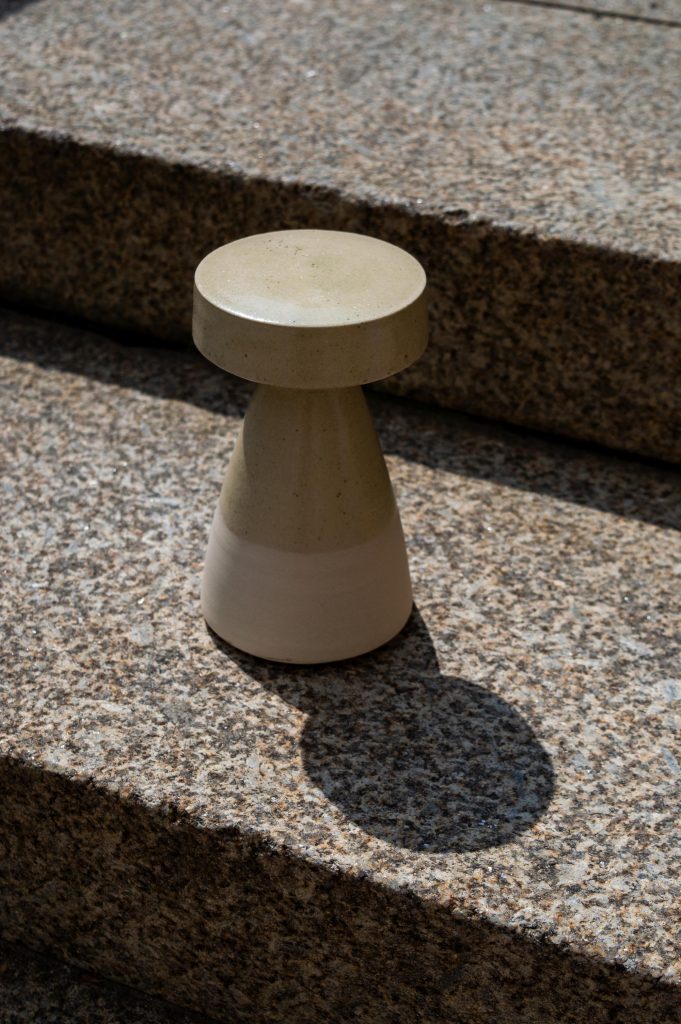
Recycled Glaze by Studio Peipei
The innovation is as poetic as it is practical. When local sawdust supplies are limited, Peipei sources stone dust from artisans in Barcelona—specifically from sculptural elements of the Sagrada Familia. The water used in processing is already removed during stone milling, minimizing energy use. The result is a stable, certified glaze suitable for daily-use ceramics and tiles, eliminating the need for traditional additives like quartz sand or metal oxides.
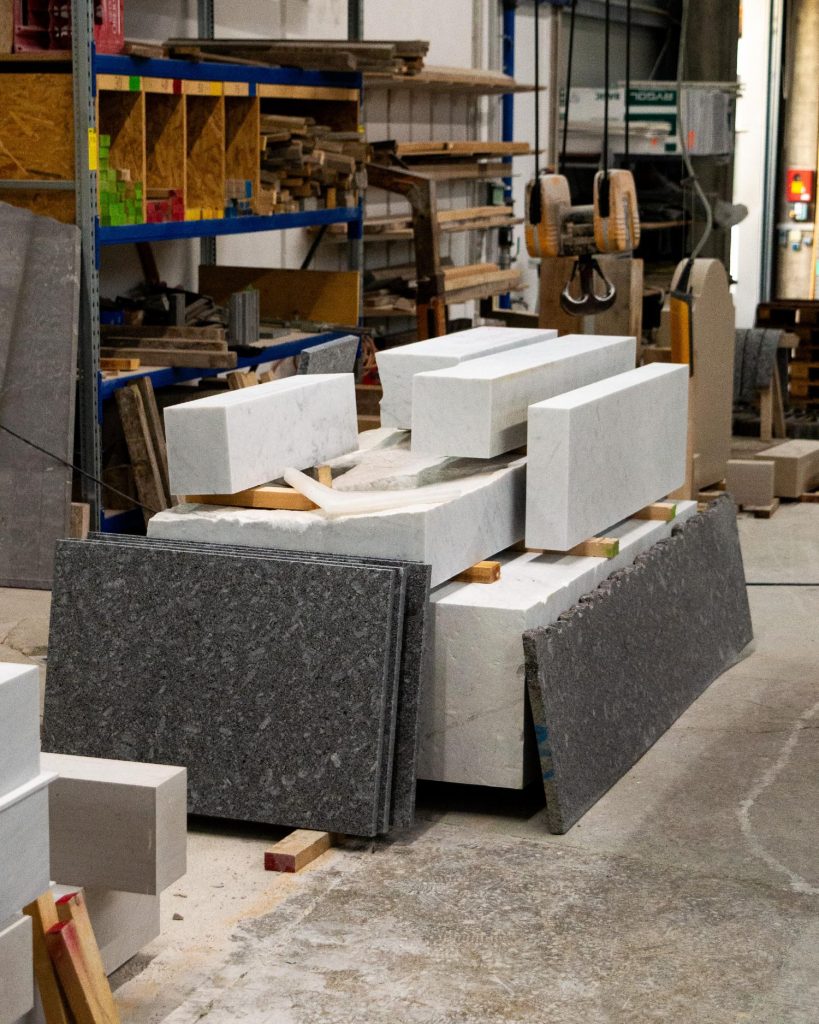
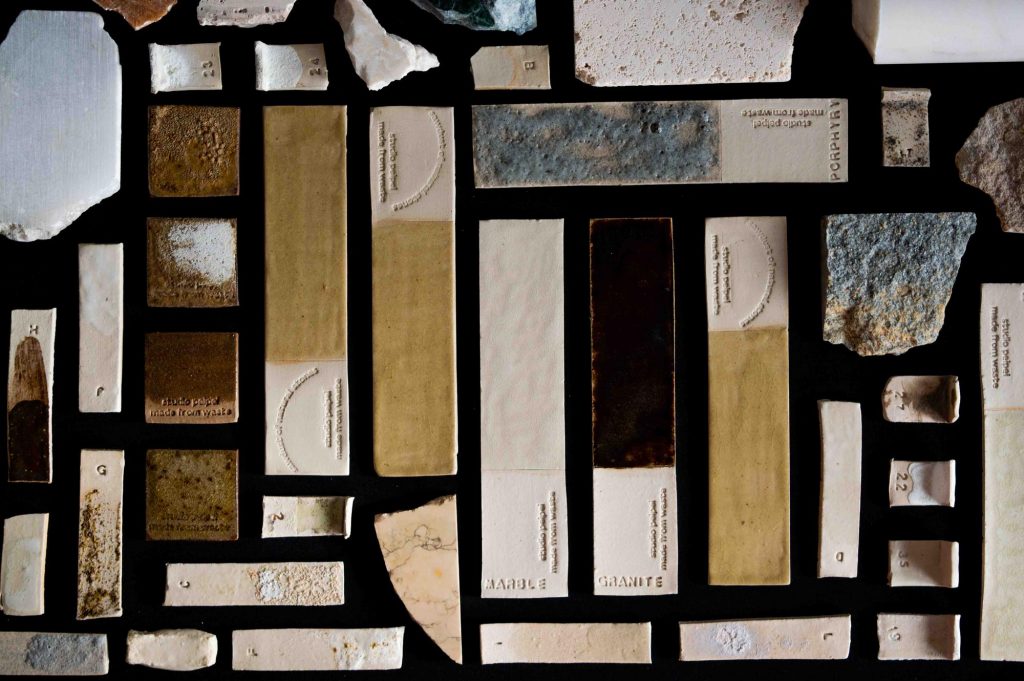
Recycled Glaze by Studio Peipei
The studio extends its sustainable ethos to packaging. Small test bags are made from uncoated, 100% recycled paper and incorporate stone dust residues. Labels are printed on surplus stock using plant-based inks, and bulk packaging is crafted from repurposed tarpaulins and advertising banners. While efforts to implement a deposit-based reuse system face logistical barriers outside Germany, Peipei remains committed to pushing sustainable packaging solutions alongside their material innovations.
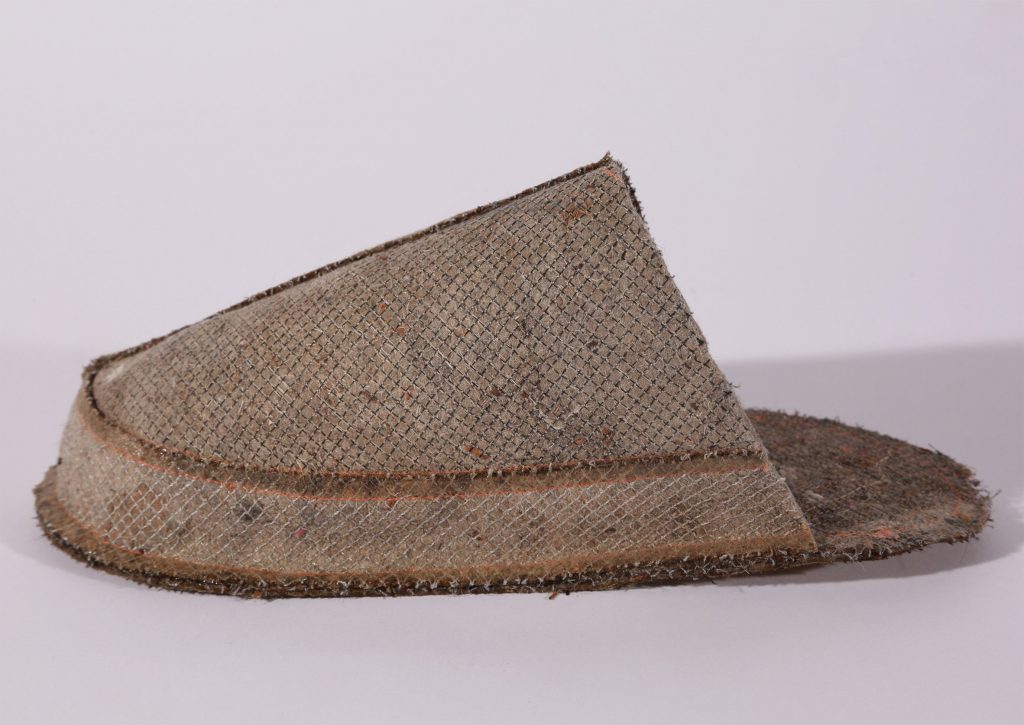
Done & Dusted by Rahat Rai (also header image)
From monumental stone to the mess beneath your sofa cushions, London-based designer Rahat Rai takes an entirely different approach to dust. A graduate of Ravensbourne University, he explored the material potential of household dust with Done & Dusted—a conceptual footwear project that reimagines domestic debris as textile. By collecting vacuum-cleaner dust and filtering out larger particles, Rai created a fiber-rich fluff that he processed using felting techniques traditionally applied to wool. Heat treatment at 200°C eliminated biological contaminants, producing a rudimentary but tactile sheet material.
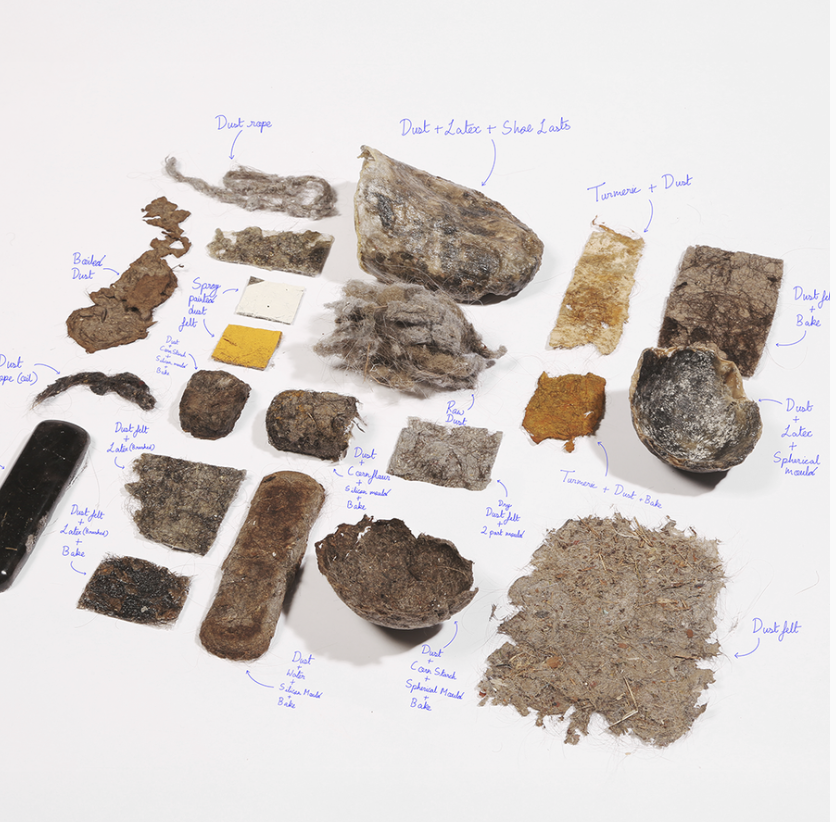
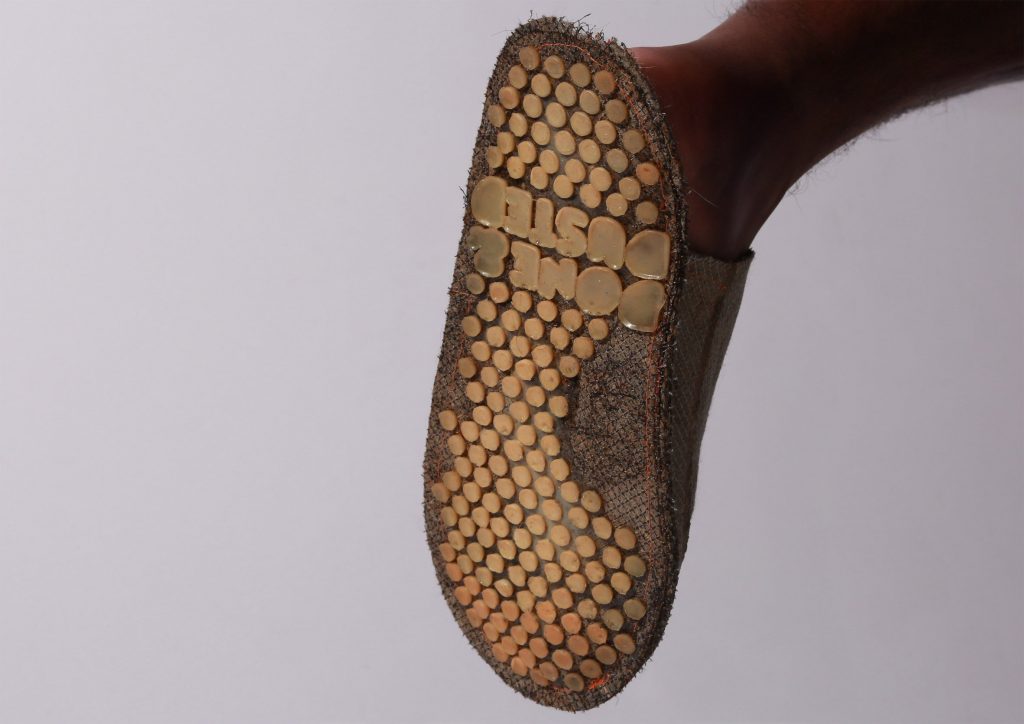
Done & Dusted by Rahat Rai
To improve structural integrity, Rai applied a ripstop-style stitch across the surface and sealed the edges with latex. The same material was used to mold the soles, which were stamped with the project title. The resulting slippers—though not built for functional wear—successfully demonstrate the potential of dust as a material resource while metaphorically inverting its role: an object that keeps dust off your feet, now composed of dust itself.
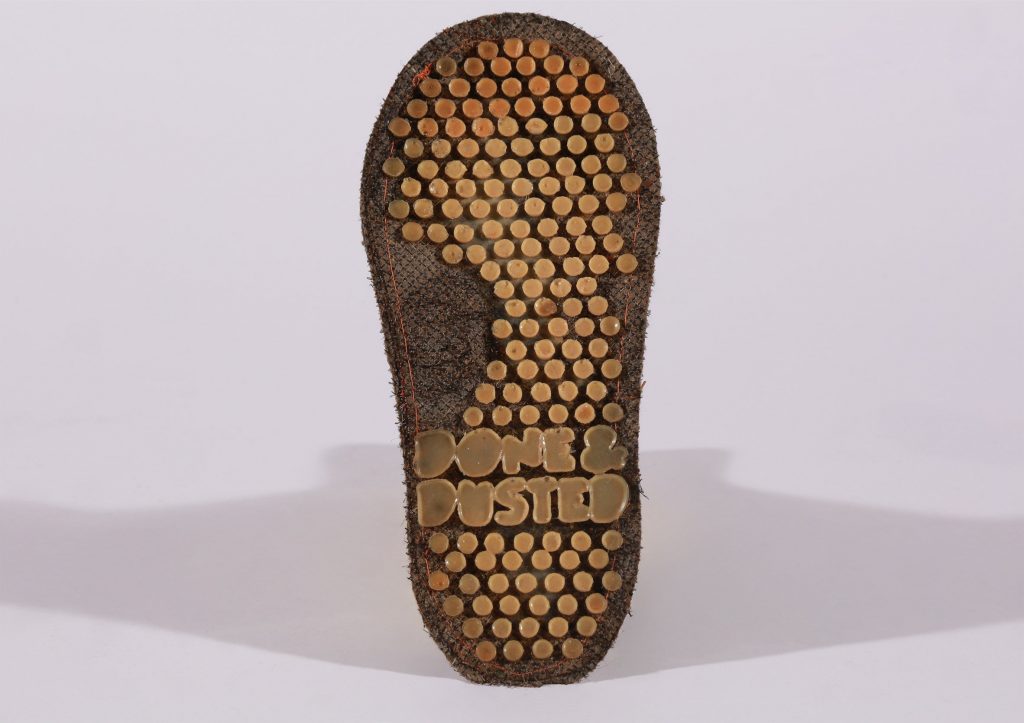
Done & Dusted by Rahat Rai
Beyond novelty, the project opens a broader dialogue on waste, identity, and materiality. Rai notes that household dust is inherently personal—containing fibers from clothing, pet hair, or skin cells—rendering the final material almost autobiographical. He envisions future applications in packaging or composite products and suggests that partnerships with cleaning services or hospitality businesses could provide scalable sources of raw material.
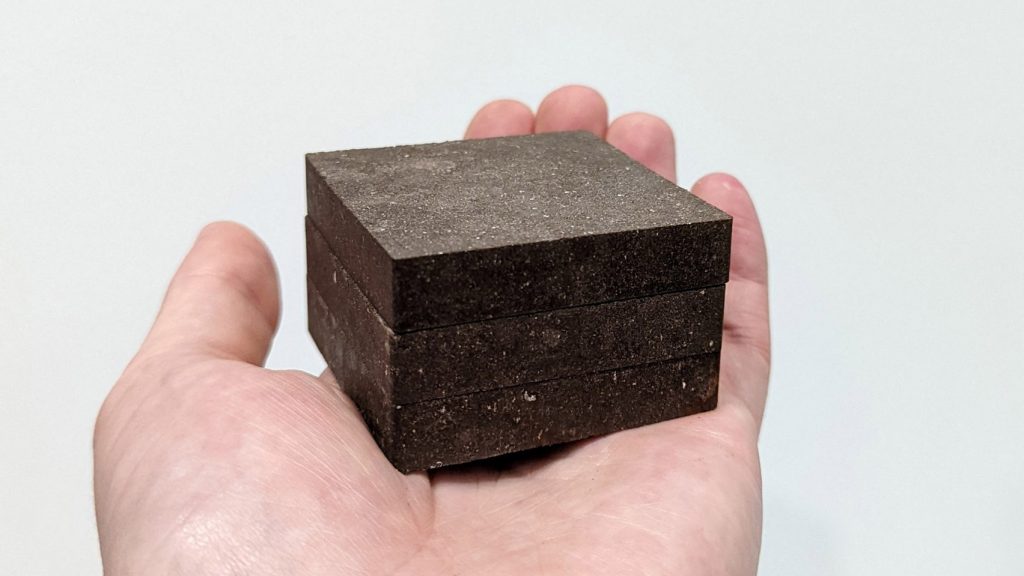
StarCrete
If Rai’s slippers explore dust as a domestic artifact, the scientists at the University of Manchester are pushing the material frontier into outer space. They have developed StarCrete, a concrete-like material intended for extraterrestrial construction. Made from simulated Martian dust, salt, and potato starch (sourced from astronaut food supplies), StarCrete is engineered to enable on-site construction on the Moon and Mars—reducing dependence on costly material transport from Earth.
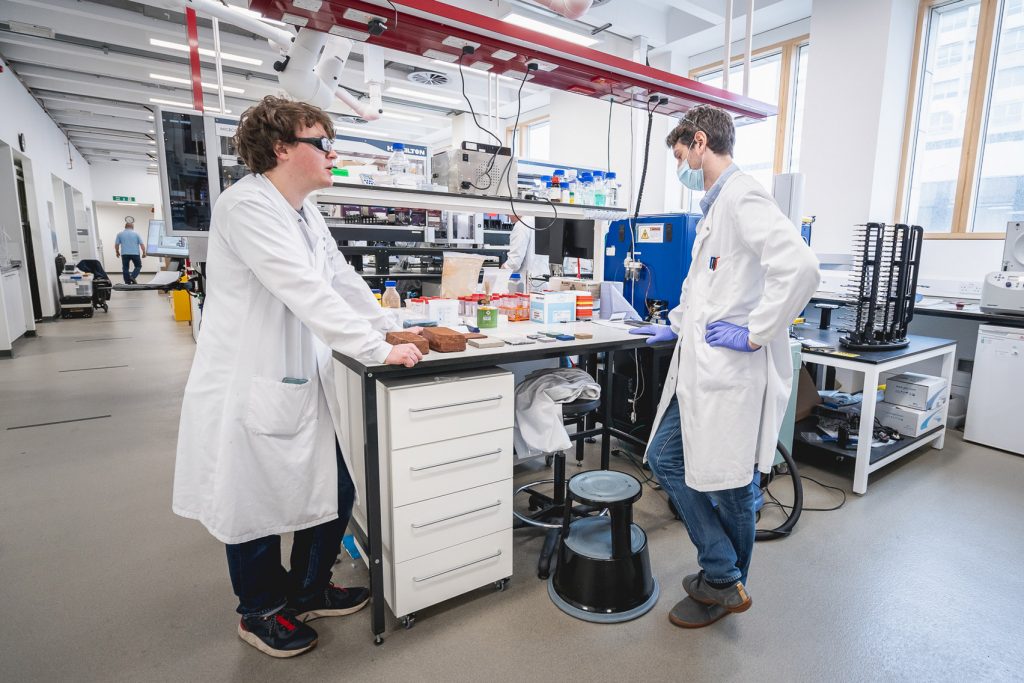
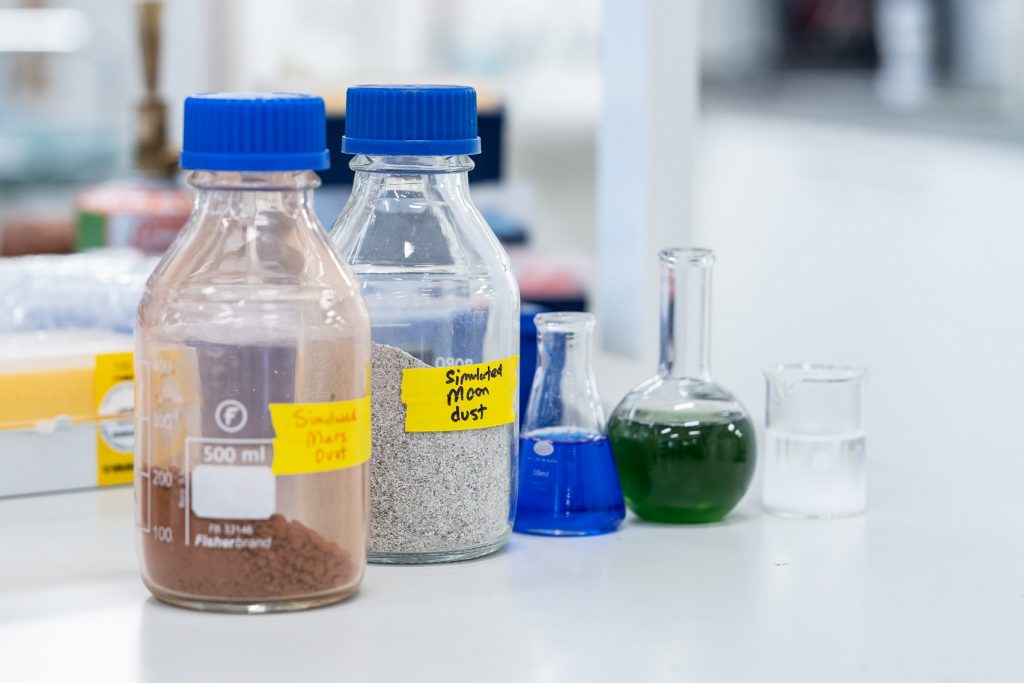
StarCrete
Initial prototypes use approximately 95% volcanic dust (simulating Martian regolith) combined with 5% starch and a small amount of salt. The material has demonstrated a compressive strength of 72 megapascals—more than double that of conventional concrete (32 MPa). When tested with lunar dust simulants, strength levels reached 91 MPa. These properties make it suitable for constructing structures that can withstand harsh space conditions, including radiation, temperature extremes, and micrometeorite impacts.
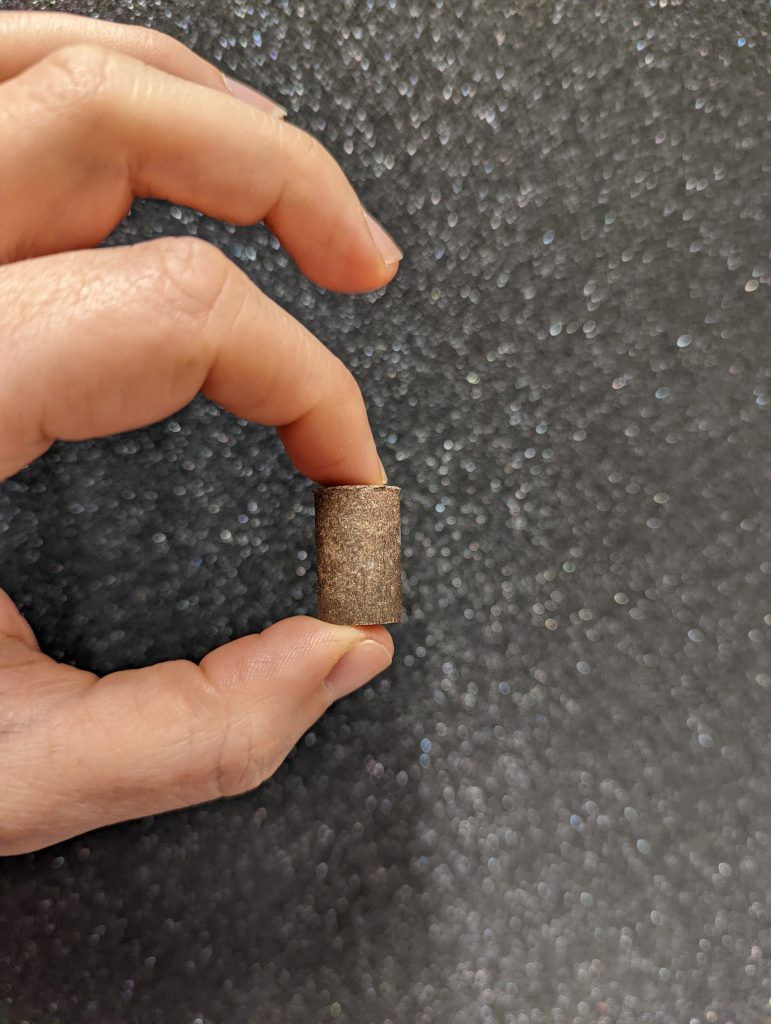
StarCrete
While earlier experiments explored using human blood as a binder, the team ultimately turned to starch for practical and ethical reasons. Now, their focus is expanding toward Earth-based applications. Concrete accounts for roughly 8% of global CO2 emissions; a plant-based, low-carbon alternative like StarCrete could represent a significant advancement in sustainable construction. The project exemplifies how research aimed at space colonization can yield transformative material solutions for terrestrial challenges.